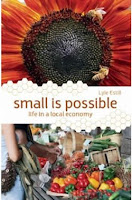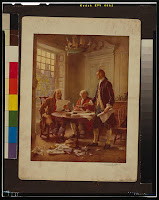 While traveling over Christmas I read Malcolm Gladwell’s latest bestseller, Outliers: The Story of Success. Gladwell explains success in terms of generation, family, culture, and class. He explains how and why the lives of “outliers” (which is defined as "something that is situated away from or classed differently from a main or related body; a statistical observation that is markedly different in value from the others of the sample"….) follow a “peculiar and unexpected logic,” and so presents a blueprint for making the most of human potential. At least this is what the book jacket says. “Why do some succeed far more than others?”
While traveling over Christmas I read Malcolm Gladwell’s latest bestseller, Outliers: The Story of Success. Gladwell explains success in terms of generation, family, culture, and class. He explains how and why the lives of “outliers” (which is defined as "something that is situated away from or classed differently from a main or related body; a statistical observation that is markedly different in value from the others of the sample"….) follow a “peculiar and unexpected logic,” and so presents a blueprint for making the most of human potential. At least this is what the book jacket says. “Why do some succeed far more than others?”This is fun for me to think about, and to read about in his book. I read The Tipping Point, but not Blink. I like Gladwell’s way of assimilating information and presenting a “new picture” using smaller patterns to reveal larger ones that help us think more deeply about our assumptions about life and the phenomena of interaction – of “facts,” information, personalities, cultures. Energy! His own book is an example of how one mind , interprets, manipulates information to make sense for and of itself, isn't it?
One fascinating point in his book, to me, is: “The idea that excellence at performing a complex task requires a critical minimum level of practice surfaces again and again in studies of expertise." Researchers have settled on what they believe is the magic number for true expertise: ten thousand hours.
‘The emerging picture from such studies is that ten thousand hours of practice is required to achieve the level of mastery associated with being a world-class expert – in anything …,” writes one neurologist. Studies don’t address why some people get more out of their practice than others, but no one yet has found a case in which true world-class expertise was accomplished in less time. It seems that it takes the brain this long to assimilate all that it needs to know to achieve true mastery.” (40)
Another fascinating point:
“The particular skill that allows you to talk your way out of a murder rap, or convince your professor to move you from the morning to the afternoon section, is what the psychologist Robert Sternberg calls ‘practical intelligence.” To Sternburg, practical intelligence includes things like ‘knowing what to say to whom, knowing when to say it, and knowing how to say it for maximum effect.’Where does practical intelligence come from?
The incubation our environment is for us as a choice we make as evolving consciousness makes these points ever more fascinating to me. This is how we learn to know where our “practical intelligence” comes from! As we learn to open our minds to the design and structure of ourselves as energy and matter, we become conscious of the purpose(s) which guide our every interaction. The Ethical Values (especially of love, truth and equality) reveal themselves to us, within us, as our minds open to thinking differently about our “blueprint.”

"I just believe that the interesting time in a career is pre-success, what shaped things, how did you get to this point?" Steve Martin told Renee Montagne. "I think it's somehow an American story in a strange way, because I started untalented. I didn't have any gifts except perseverance."
I am also reading Steve Martin’s memoir, Born Standing Up: A Comic’s Life (which he is said to call a biography rather than an autobiography, someone he once knew). He writes about redistricting moving him to Garden Grove High School (near Garden Grove, CA, in the 1960s), and on his first day of school, the student body being called to assembly. He had determined, with this move, that he would leave his old personality behind and live as this new “non-conformist” personality (though, he writes, the changes may have been imperceptible to those he knew in his “former life”). In the assembly on the first day in his new school, he first saw the ‘face of God,” in the ice-blue spotlight that shone center stage in the surrounding dark. The 1500-seat auditorium had great acoustics, a polished hardwood stage, which included a proscenium framed by heavy velvet curtains (which always have their own presence), and the pre-program dark was full of adolescent chatter and the high energy of first-day-of-school and anticipation of grand entrances. He knew he wanted to be “up there” rather than “down here.”
One reviewer wrote, Even for readers already familiar with Mr. Martin’s solemn side, “Born Standing Up” is a surprising book: smart, serious, heartfelt and confessional without being maudlin. Decades after the fact he looks back at a period of invention and innovation, marveling at the thought that his efforts might have led absolutely nowhere if they had not wildly succeeded. While there is much to validate his sense of having been lucky, nobody put it better than Elvis Presley, whom Mr. Martin once encountered backstage when both were enjoying the status of show-business kings. “Son,” he says Presley told him, “you have an ob-leek sense of humor.” Having just come back from Memphis, this Elvis note was irresistible.
I think about the interests, passions, fun of tricks, sleight of hand that captured his thinking, the way he took everything in during the shows he watched – the nuances of each performer and the context of audience.
I think about how each of us, as personalities, follow dreams that live within us. My waking dreams have been to truly know myself, as the sum of child, woman, human. Each experience has taught me something about myself, what I hold dear, what I have feared. With each day’s passing, now, I am more alert to the way my thoughts move and create, the way my limbs feel as I live and breathe, sometimes the way breathing itself ripples inside like a cloud forming or like the river current – smooth, cool or warm, clear, strong, sometimes like music (moonlight sonata), sometimes strong like a waterfall rush.
Though a woman in this life, I’ve not had children – one primary role of a woman in life. I’ve not been married, though I’ve had “serious” relationships. I’ve ridden these experiences as the waves within me. What has opened my heart the most has been the leaves of learning, the way relationships fit together, what builds, grows, and what remains. One of my favorite activities as a child was cutting out paperdolls, cutting pictures from magazines, and anything “cuttable.” I could spend hours looking, cutting. Recently a friend and I made a birthday card for my friend’s daughter, cutting pictures from magazines, of things we thought suited her, images that we smiled at. I have always liked to create shapes, textures, put them together, find patterns. From the zebra patterned throw on my bed, to the bookmarker in my book, I appreciate memories, I feel myself as that child I was, intensely focused, all else silent around.
Now, as I grow and change (and age!), and lives of others change as mine does, I’m changing my relationships, my feelings about loss and gain. “Things” I used to cling to – feelings, perceptions, people as I thought they were or wanted them to be – I’ve let up on, as love guides and influences me in my current of my own life images. The simple gestures, the easy nature of how we can each live, show ourselves what we’re made of, are gifts I’m learning to honor. My tears flow more freely, both joy and sadness, and I know the deep satisfaction of laughter. I am watching my own parade, and I celebrate better how uniquely we create each life, each day.
My own ice-blue spotlight, eye of God, is like a constantly spinning set of concentric circles, my own green eye visible to me always – pigment of grass, chlorophyll, growth, happiness, glint of sea glass under ocean foam like lace. I’m learning to know the rhythm of change as my own. What a gift of a year, of all years.
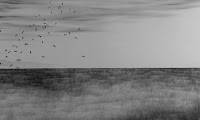

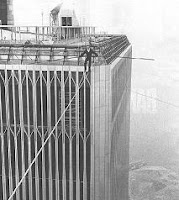







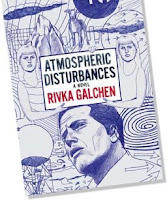

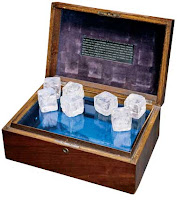
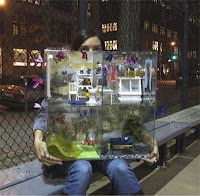 Sloane C
Sloane C
